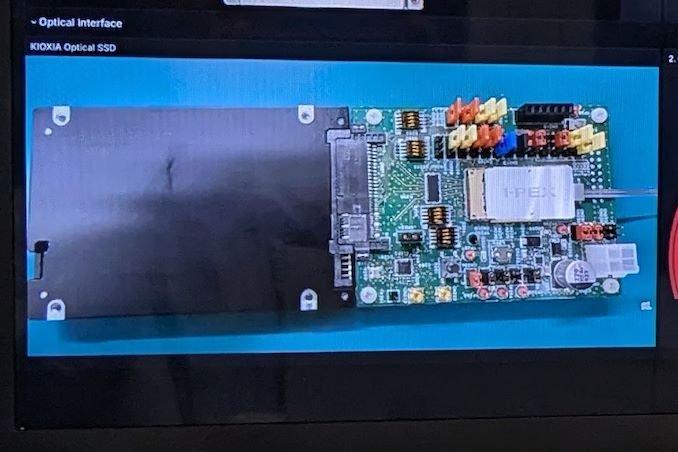
Kioxia Demonstrates Optical Interface SSDs for Data Centers
Several years ago, the New Energy and Industrial Technology Development Organization (NEDO) under the Japanese government allocated financing for the development of green data center technologies. In an effort to save up to 40% of overall power consumption, several Japanese companies are developing an optical interface for their enterprise SSDs. And at this year’s FMS exhibition, Kioxia demonstrated its optical interface.
For this demonstration, Kioxia took an existing CM7 enterprise SSD and created an optical interface for it. A PCIe card with built-in optics developed by Kyocera is installed in the server slot. The optical interface allows you to transfer data over long distances (in the demo version it was 40 m, but in the future Kioxia promises a cable length of up to 100 m). This allows storage to be kept in a separate room with minimal cooling requirements compared to a rack of CPUs and GPUs. Disaggregation of different server components will become possible as very high bandwidth interfaces such as PCIe 7.0 (at 128 GT/s) become available.
The optical SSD demonstration showed a small loss in IOPS performance but a significant latency benefit compared to an enterprise-supplied SSD over a copper network link. Clearly, optical links have advantages in wiring requirements and signal integrity.
Being a proof of concept, we see the need for an industry standard approach to gain acceptance among various data center vendors. PCI-SIG Optical Working Group It will be necessary to come together soon to develop a standards-based approach to this problem.
2024-08-13 16:00:00